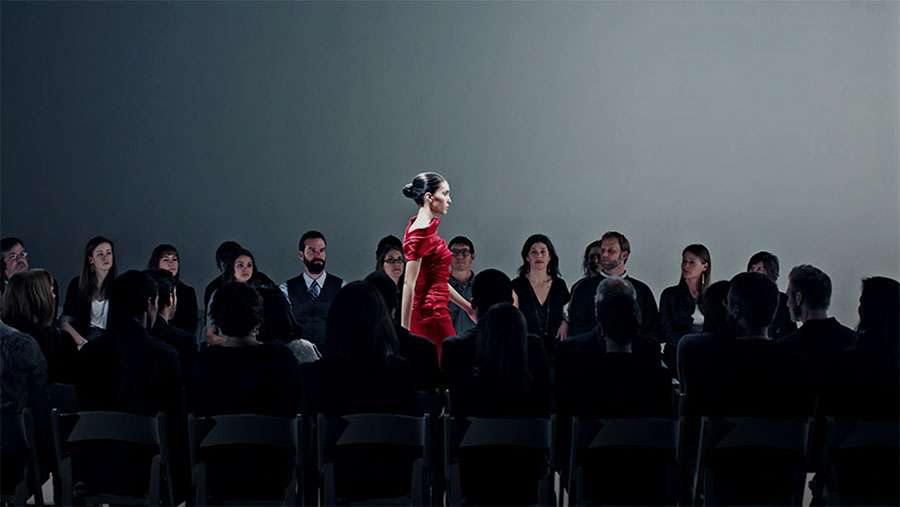In its The State of Fashion 2024 study, McKinsey & Co. provided a bullish outlook for technical outerwear, stating the category “has been propelled by consumers post-pandemic embrace of healthier lifestyles as well as ‘gorpcore,’ and is likely to accelerate even further in 2024.”
The management consultancy company added, “There is also a shift to spending more time outdoors, which will likely drive up demand for outdoor wear in 2024, further blurring the lines between functionality and style.”
Outdoors Reinvented landed among ten themes McKinsey forecasted will shape the fashion economy in 2024, including:
- The recent reorientation of outdoor apparel and footwear into the everyday wardrobe means brands will forge closer ties between style and utility;
- Competition could increase across price points and categories, with some outdoor brands skewing apparel towards the high end while others look to shake up footwear and
- As the Gorpcore trend cools, brands could lean into “quiet outdoor” fashion.
“One lasting impact of the COVID-19 pandemic has been soaring consumer interest in healthier lifestyles and nature-focused activities, like camping, hiking and boating,” McKinsey said in the study.
Also cited were the People and Nature surveys for England findings that concluded nearly half of UK survey respondents spent more time outdoors than before the pandemic.
In China, McKinsey noted that by the end of 2021, more than 400 million people participated in outdoor sports and search volume for “Outdoor” on the Chinese marketplace Tmall between 2021 and 2023 surged over 600 percent.
McKinsey wrote, “This is, of course, good news for outdoor sportswear brands, many of which have also been riding the ‘Gorpcore’ trend that has picked up steam over recent years.”
Gorpcore fashion focuses on sporty, utilitarian pieces that embrace the outdoors, a trend loved by fashionistas and celebrities, including Kendall Jenner and Bella Hadid.
The study states, “Outdoor enthusiasts and young urbanites alike have been gravitating to Gorpcore’s functional, outdoors-inspired fashion, such as shell jackets and hiking-style sneakers.”
The study cited McKinsey’s “Sporting Goods 2023: The Need For Resilience In A World In Disarray” study that found revenues for the outdoor category were 24 percent higher than pre-pandemic years.
Among sports brands, McKinsey noted, “Many of the fastest-growing sports brands of recent years have roots in outdoor performance but have since transcended their core customer bases to attain widespread popularity.”
The study cited The North Face delivering its tenth consecutive quarter of double-digit revenue growth in July, and Amer Sports’ recent traction gained scaling Salomon and Arc’teryx, two brands initially positioned as ski and climbing brands, respectively.
“A similar evolution is taking place with technical and trail running brands such as Deckers-owned Hoka and On, which found loyal customers within running communities before their innovative, high-comfort solutions found appeal with wider audiences,” according to McKinsey.
Luxury Brands Gain Toehold In Outdoors
In the luxury category, McKinsey noted that following the success of a collaboration between The North Face and Gucci starting in 2021, “a wave of performance-influenced footwear collaborations have followed,” including collaborations between On and Loewe, Hoka and Moncler, and Vibram and Balenciaga. In apparel, notable collaborations have included Jil Sander and Arc’teryx and Adidas and Moncler.
“These partnerships have elevated Gorpcore, while celebrities like Kendall Jenner and Bella Hadid have taken to combining high luxury fashion with outdoor wear and hiking shoes,” according to McKinsey. “Mid-market brands have been heading outdoors, too. H&M’s summer 2023 Move collection featured water-repellent parkas and convertible hiking trousers, while Inditex’s loungewear and activewear.”
McKinsey further pointed to brands including Oysho, Free People, Merrell, and 66°North finding success in marrying outdoor and lifestyle.
McKinsey said, “Brands are expected to forge ever-closer ties between style and utility as lifestyle brands deepen investment in the outdoors, and outdoor brands increasingly court fashion-focused customers. As such, outdoor specialists are likely to more closely align their products to everyday lifestyles.”
McKinsey further noted that luxury players from Dior to Burberry have shifted from “one-off outdoor capsules to permanent collections,” while outdoor brands are increasingly mimicking luxury players by opening high-profile flagships and pop-ups that elevate their brands. McKinsey wrote, “This includes Arc’teryx’s latest flagship store in Osaka’s Shinsaibashi neighborhood, which features the first Arc’teryx cafe with food inspired by the brand’s Canadian roots, as well as a Japanese menu.”
Quieter Styles Ahead
McKinsey warned that similar to how the “Quiet Luxury” aesthetic gained popularity as interest in streetwear waned, “Quiet Outdoor” styles are likely to gain popularity in the year ahead, with preferences “shifting from flashy performance jackets and cargo trousers to elevated garments with minimal logos while still featuring technical fabrics.” Examples included Arc’teryx’s increased investments in its “fashion-forward yet minimalist technical clothing” Veilance sub-brand. McKinsey also pointed to minimalist approaches from Goldwin and Roa Hiking.
McKinsey recommended, “Brands across all price segments should get ready to embrace the outdoors in its new, blended form and find a place in the shifting competitive landscape. Indeed, competition may increase across price points and categories, with some outdoor brands.”
Brands, according to McKinsey, will also be challenged to establish “relevancy among diverse customer segments” when trying to connect with outdoor enthusiasts, sneakerheads and fashionistas.
McKinsey warned, “Brands may risk watering down their identities and losing what makes them distinctive in the first place. For outdoor brands looking to conquer fashion, embracing a quieter aesthetic may be the key. On the other hand, fashion brands making their foray into outdoor wear may be able to crack the design code but may have to rapidly scale capabilities and suppliers to compete. Redefining the go-to-market strategy to prioritize innovation and extensive testing of materials for performance will likely become table stakes.”
Photo courtesy McKinsey
















